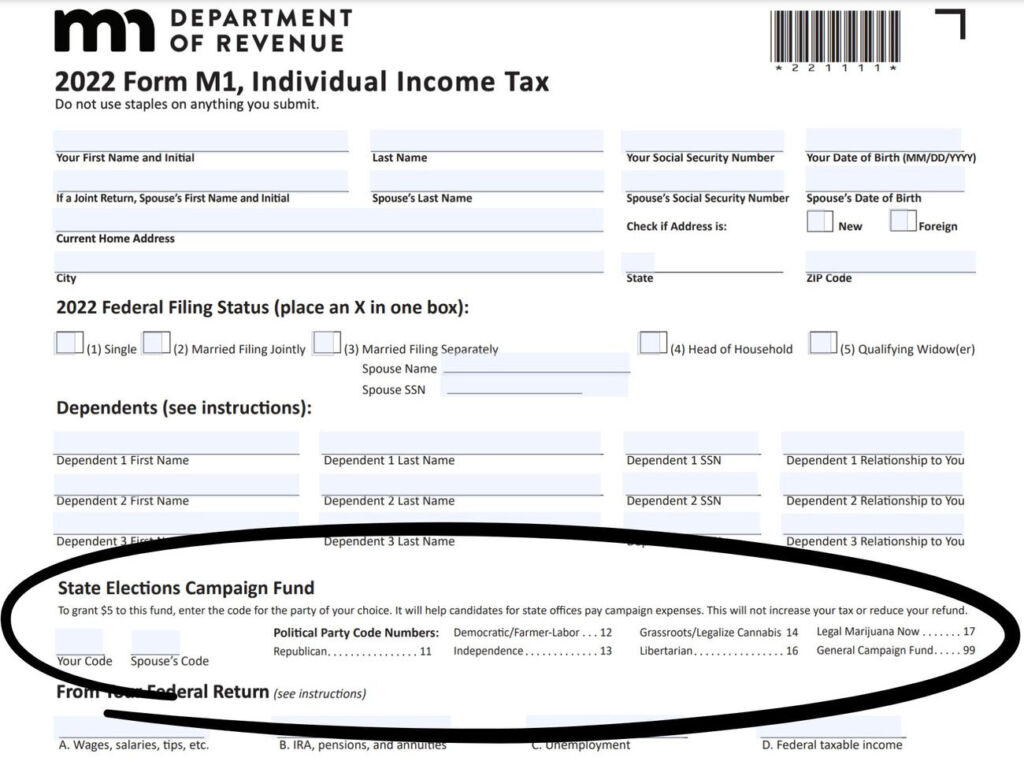Capitol Watch: Time to end welfare for political campaigns in MN
Are you one of those people who check the box every year on your taxes to designate $5 to the political party of your choice, only to wonder how that money gets distributed? You may be surprised to know the money is divided using a complicated formula that gives the most money to candidates running on the winning side of the most politically lopsided districts. It’s almost as if incumbent politicians wrote the law to use your tax dollars to keep them perpetually in office. Shocking, I know.
You won’t be surprised to learn that Democrats benefit from this program much more than Republicans.
The formula first divides the check-off dollars into different party accounts based on the taxpayer preference. The fact that more Democrats check the box than Republican probably reflects how partisans feel about public financing of political campaigns. Remember, by checking the box, you are directing taxpayer funding into one of these accounts, not contributing your own money.
Next the funds are divided by county for each party based on the source of the check-off. After that step, it gets complicated and weird. The party money for each county is divided among the legislative candidates based on the strength of the party in each district, with the strongest districts getting the most money. This means the candidates who need the least amount of help to win their races get the most money from the state.

Here is the language directly from the statute, which tries to justify this counterintuitive formula:
“To ensure that money will be returned to the counties from which it was collected and to ensure that the distribution of money rationally relates to the support for particular parties or for particular candidates within legislative districts, money from the party accounts for legislative candidates must be distributed as provided in this subdivision.”
The formula adds the votes of all candidates for a particular party across all races and divides that by the votes in each legislative district, giving each district a percentage share of the total vote. This percentage is multiplied by the total dollars available in that county by party to give each candidate their subsidy.
In the 2022 election, the highest public subsidy went to Sen. Erin Murphy who represents the Highland Park area of St. Paul in Ramsey County. She received $14,792 from the check-off program. Ramsey County is a large county with a lot of Democrats who checked the box on their taxes. Her district in St. Paul racked up a high percentage of votes for the DFL ticket in 2020 (the previous general election) so she got the biggest share of the money. Her Republican opponent failed to meet the minimum requirements for the program and received no subsidy at all.
Sen. Murphy won the election with 85% of the vote. Since she didn’t need the taxpayer subsidy for her own campaign, she transferred the money to the State DFL Party and the Senate DFL Caucus for use in the broader campaign.
This scenario played out in every single county and every single legislative district. The more a candidate needed help to win, the less money they received from the subsidy. And because Democrats participate at such a high level, Democrat candidates benefited way more than Republicans across the board.
- Democratic candidates for the House and Senate in 2022 received almost twice as much from the check-off program ($907,760) as their Republican opponents ($558,868).
- The average subsidy for a Republican Senate candidate was $5,558 while DFL Senate candidates received $8,300.
- The average subsidy for Republican House candidates was $2,865 compared to $4,179 for their DFL opponents.
This public funding disparity is one of the many little-known institutional advantages that contribute to Democratic Party domination in Minnesota. Ironically, Minnesota Republicans have used their intermittent power over the years to go after the Political Contribution Refund (PCR) program instead of the public subsidy program, even though Republicans benefit much more from donors getting their $75 reimbursement from the state (the amount just went up in 2024). The PCR program was suspended in 2010 and in 2016, only to be reactivated the following year.
Minnesota’s long history of using public funds to finance political campaigns should come to an end. It’s not the role of government to provide welfare checks to politicians for their campaigns.
But it’s a tough sell to convince incumbents to eliminate a source of revenue for their reelection campaigns.
This content was originally sent as our Capitol Watch email. To subscribe, click here.